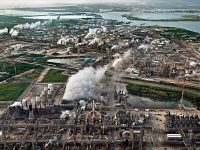The Anthropocene perspective
A geological approach to climate change
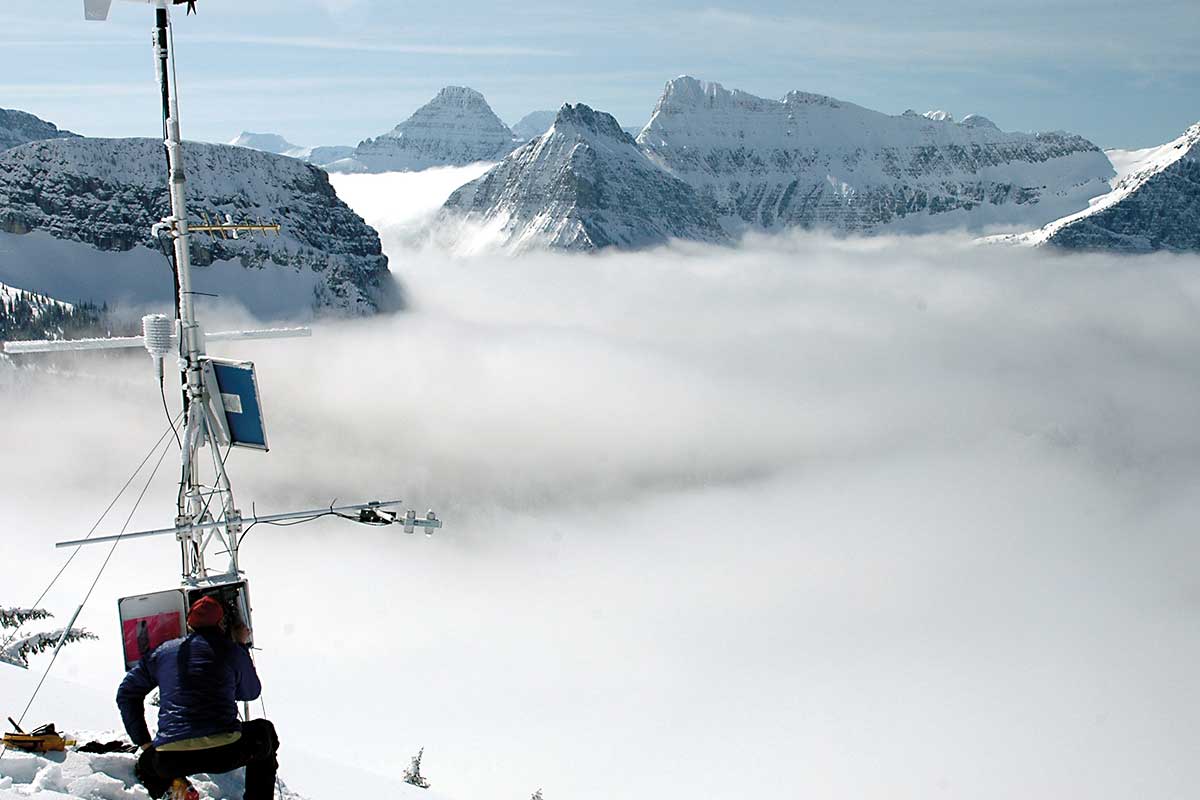
The most recent division of geological time is based on climate events caused by variations in the Earth’s orbit and axis of rotation on a scale of thousands of years. However, the magnitude of geological change caused by humankind through its still young technosphere, particularly since the mid-20th century, is negatively affecting the other classical spheres (atmosphere, hydrosphere, biosphere, and geosphere). This is because of our increasing demand for raw materials and the incomplete recycling of its residues (e.g., greenhouse gases). The massive use of fossil fuels to power the recent boom in industrial development has turned humanity into the new agent of planetary-scale climate change. Some alterations associated with this new Anthropocene climate system are already irreversible and exceed the natural variability of the last few thousand years.
Keywords: geology, Earth system, technosphere, Quaternary, Anthropocene, climate change.
Introduction
Our planet’s geological record clearly shows that the relative percentage of the greenhouse gas, carbon dioxide (CO2), decreased during much of the Phanerozoic Eon (the last 540 million years), leading to a widespread drop in global temperature. Over the last 100 million years, the Earth progressed through several conditions, starting with warm, ice-free greenhouse conditions during the Cretaceous period, with atmospheric CO2 concentrations three to six times higher than pre-industrial levels and sea levels more than 60 metres above their present levels. Later it became a refrigerator with much lower CO2 concentrations and sea levels as much as 130 metres below present levels during the Quaternary period (the last 2.6 million years). This decrease in atmospheric CO2 enabled the formation of the first large ice sheet in Antarctica 34 million years ago (at the beginning of the Oligocene), while the large ice sheets in the Northern Hemisphere, including Greenland, did not form until the beginning of the Quaternary period.
Building on the great climate variability that has characterised our planet’s environmental evolution during its long geological history, this paper will briefly review the natural climate changes that have taken place during its more recent past and will highlight the role of the human species in altering the geological and climatological processes operating today.
Time and climate units
The Quaternary period is characterised by geological time units linked to climatic events. The Ice Age of the Pleistocene Epoch, for instance, was interrupted by numerous rapid and brief warm interglacial phases, caused by variations in the Earth’s orbit and axis of rotation (Milankovitch cycles). The last of these warm phases is the Holocene Epoch, which began 11,700 years ago when the climate in the northern and southern hemispheres stabilised, and continues today. Similarly, the subdivision of the Holocene into three ages (Greenlandian, Norgrippian, and Meghalayan) was based on geochemical markers preserved in ice cores and speleothems that reflect abrupt global-scale climate changes that occurred 11,700, 8,200, and 4,200 years ago, respectively (Walker et al., 2018).
«The biggest environmental problem conditioning our future as a species is certainly ongoing global warming»
Current humans have been part of our planetary system since the emergence of Homo sapiens some 300,000 years ago. We have evidence of millennia of continuous human population growth and progressive technological and cultural sophistication (such as the domestication of different animals and plants) leading to slow, diachronic anthropogenic environmental changes in environments across the entire planet. The magnitude of these environmental changes is vastly different from the large-scale and progressively more synchronous changes that have taken place over the last two centuries of industrialisation, which took a steep upward turn in the mid 20th century (Syvitski et al., 2020). The fundamental differences between the past and present are related to the magnitude, speed, and global synchrony of anthropogenic change recorded in the corresponding geological signals (e.g., the sea level rise, loss of glacial ice, ocean acidification, etc.). Indeed, by producing cement and plastics or burning fossil fuels to develop our recent technosphere, humans have modified the carbon cycle, overloading the atmosphere with additional carbon dioxide (CO2).
Thanks to the pioneering work of Eunice N. Foote (1856), John Tyndall (1859), and Svante Arrhenius (1896) on the effects of greenhouse gas concentrations in the atmosphere, we now know that the biggest environmental problem conditioning our future as a species is certainly ongoing global warming. The knowledge that emissions of massive quantities of CO2 affect the energy balance of the Earth’s surface has compounded our concern about the negative impact of human activity on a wide range of ecosystem services that support life on the planet.
Humanity as a new geological agent
he natural forces that drive the Earth’s surface geological processes have traditionally been considered to operate on such a large and long-term scale that any human impact, by comparison, would be virtually negligible. However, this view started to change a few decades ago as the magnitude of human-induced geological change became more apparent, and this impact was recorded in sediments.
Paul J. Crutzen and Eugene F. Stoermer (2000) stated that human influence, as evidenced by the increase in greenhouse gas concentrations observed in ice core surveys since the late 18th century, had brought the Earth into a new phase of its geological history: the Anthropocene. Since then, this concept has rapidly entered the scientific literature as a remarkably effective paradigm to describe how humanity has changed the functioning of the planet’s surface geological processes the more the population grew from 1 billion in 1800, to 2.5 billion in 1950, to almost 8 billion today (Syvitski et al., 2020). Thus, the current behaviour of the oceans, atmosphere, land surface, cryosphere, biosphere, and climate are no longer the same as they were during the Holocene.
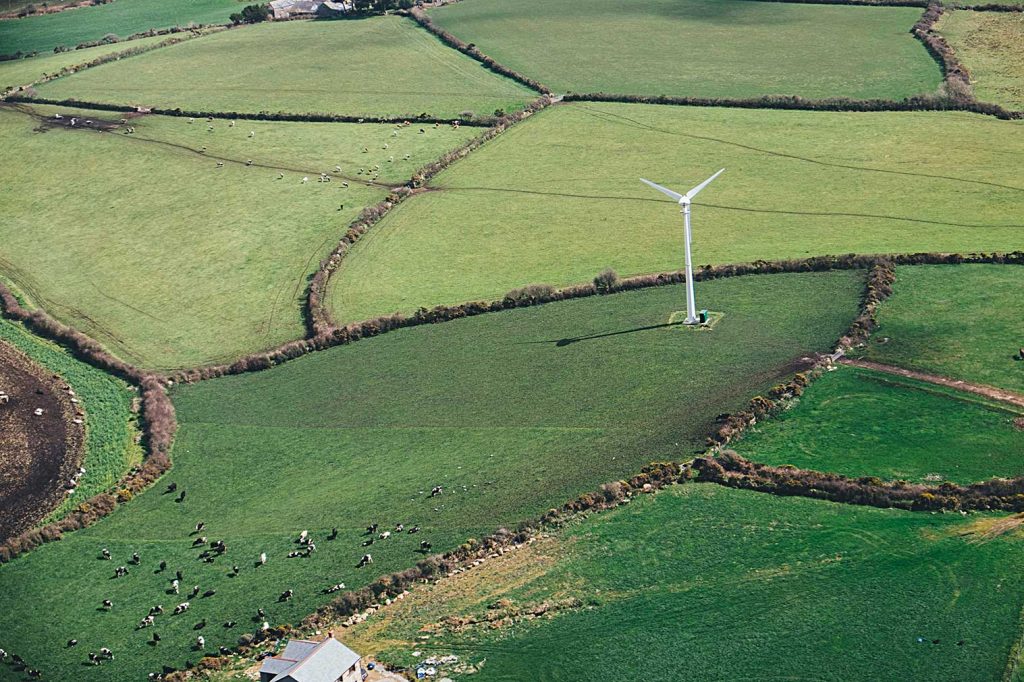
The continuous growth of the human population and our progressive technological and cultural sophistication have led to slow and diachronic anthropogenic environmental changes across the planet, including the domestication of different animals and plants. / Photo: Annie Spratt / Unsplash
Although the increase in CO2 and other greenhouse gases began with the Industrial Revolution in the late 18th century, the identifiable impact on the chemical composition of the atmosphere and on the planet’s biogeochemical cycles started from 1870 and became evident globally only in the mid-20th century (Syvitski et al., 2020). This sharp increase in the magnitude and speed of human activities, as well as their impacts, is known as the «great acceleration»; an explosion in human activity and interconnections which, since about 1950, has significantly altered the structure and functioning of the planetary system (Steffen et al., 2015).
The Anthropocene is different from all other geological time units because it is the first chronostratigraphic unit that is fully contained within recorded and well-documented human history. Furthermore, it covers a time period for which we have an acceptable understanding of how the Earth system operates thanks to detailed instrumental records that complement geological information. For example, global climate is monitored through a network of stations and satellites that track temperature, precipitation, solar radiation, wind speed, and other atmospheric parameters in real time. Similarly, through systems such as the network of marine buoys, it is possible to routinely measure the temperature, salinity, and chemical state of the oceans from their surface up to a depth of 2,000 metres (Summerhayes & Cearreta, 2019).
Humans are now acting as a major geological agent on a planetary scale, and our activities have already altered the course of many key Earth processes. Some changes associated with the Anthropocene (such as the rate of extinctions or species translocations) already exceed the natural variability of both the Holocene Epoch and the Quaternary Period (Waters et al., 2016). These disturbances include increments in atmospheric levels of greenhouse gases as well as variations in stable carbon isotope ratios (an increase in 12C due to the Suess effect), as a consequence of massive fossil fuel use. Other perturbations, such as temperature and sea level rises, exceed Holocene climate variability, but not yet Quaternary climate variability (Waters et al., 2016). This implies that the Holocene is no longer useful as a geological time to adequately contain the current rate and magnitude of the Earth’s parameters. The last few decades have seen the most rapid transformation of the relationship between our species and the natural environment in human history.
The ubiquitous global system that includes humans and their different material elements is commonly referred to as the technosphere (Zalasiewicz et al., 2017). Our current technosphere is profoundly affecting all other spheres of the planet (the atmosphere, hydrosphere, biosphere, and geosphere) due to its increasing demand for raw materials and scarce and incomplete waste recycling system. Thus, a significant part of our technosphere is already accumulating as solid waste in landfills, but also in the form of gases such as released CO2 and methane (CH4), which accumulate in the atmosphere, in addition to other pollutants that go into the hydrosphere and into sediments (Zalasiewicz et al., 2017).
Main climate elements
The Sun is the driving force of the Earth’s climate and solar radiation is controlled by three main factors. First, stars tend to increase their output over time. In our case, the sun has increased its output by 6 % over the last 500 million years (Summerhayes & Zalasiewicz, 2018). In addition, the Earth’s orbit and the tilt of its axis have regular variations that affect insolation and heat distribution on a scale of tens of thousands of years (Summerhayes & Cearreta, 2019). Finally, sunspots follow different time cycles and entail climate warming when their occurrence on the Sun’s surface increases (Summerhayes & Zalasiewicz, 2018).
Human activity is the new planetary-scale climate driver, especially through the emission of greenhouse gases (CO2, CH4, and N2O), However, the addition of industrial aerosols that reflect sunlight, as well as black carbon (soot) that absorbs heat, similar to the effect of naturally occurring sulphur dioxide (SO2) and volcanic dust during large eruptions (Church et al., 2013), also affect this activity.
«The interaction of these natural and human factors makes the relationship between CO2 and atmospheric temperature quite complex»
The interaction of these natural and human factors makes the relationship between CO2 and atmospheric temperature quite complex. For example, although atmospheric temperatures were expected to rise during the 1960s as CO2 emissions increased, global temperatures remained relatively cool. This was because of a massive input of dirty air from increased coal burning in homes and industry, because these aerosols reflected enough solar energy to prevent global temperatures from rising. Thus, temperatures did not rise until the 1970s, when industrialised countries introduced laws to eliminate particulate aerosols, the main cause of industrial smog (Summerhayes & Zalasiewicz, 2018).
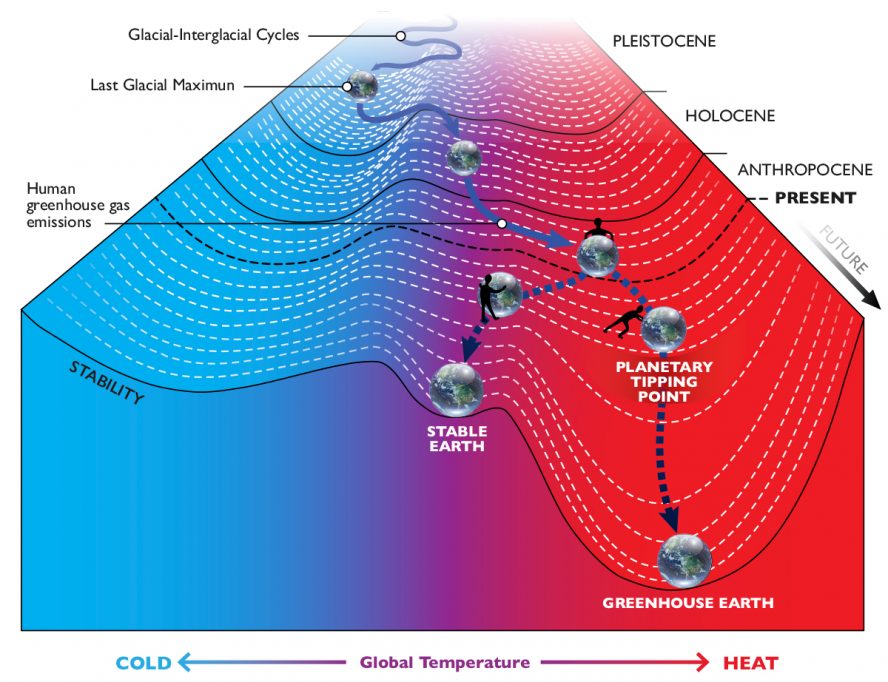
Figure 1. Graphical representation of the climate variability of the Earth system over the last million years. The Earth is currently on a warming trajectory driven by human greenhouse gas emissions. It can now take two possible paths (dotted lines). If the Earth exceeds the planetary tipping point, it will follow an irreversible path to a greenhouse state. In contrast, the alternative pathway leads to a stable Earth, where proper environmental management will allow the Earth system to remain quasi-stable. / Source: Retrieved from Koppers & Coggon (2020) (open access)
Consequences of ongoing climate change
Since the year 1900, the Earth’s lower atmosphere has warmed by 1.2 °C and increasingly deep parts of the ocean have also risen in temperature; the global sea level has risen by 30 cm; sea ice is melting; most mountain glaciers are retreating; both the Antarctic and Greenland ice sheets are losing mass; and the ocean is becoming more acidic. The only factor that can explain all these phenomena is the increase in greenhouse gas emissions caused by human activities, the effect of which is increased by the progressive evaporation of water from the warming ocean. As a consequence of the injection of 10 Gt/year of CO2 into the atmosphere, the global increase in this gas is currently about 20 ppm/decade, i.e., 100 times faster than the natural rate of CO2 has been entering the Earth’s atmosphere over the last 800,000 years (Summerhayes & Cearreta, 2019).
About 50 % of anthropogenic CO2 emissions have accumulated in the atmosphere, and that CO2 will remain in the atmosphere for over 100 years. The remainder is absorbed in roughly equal amounts by both land and oceanic sinks, which help slow the CO2 accumulation rate in the atmosphere. However, these also change the chemistry of ocean waters by increasing their acidity and causing the dissolution of organisms that build their shells with calcium carbonate (Church et al., 2013).
Present and future
At the United Nations Climate Change Conference (COP25) in Madrid, the United Nations Environment Programme published the 10th edition of its Emissions gap report (UNEP, 2019). The overall conclusions of this report could not be more discouraging: the world’s 20 largest economies, the so-called G20, continue to increase their greenhouse gas emissions, which now account for almost 80 % of global emissions, and are systematically failing to meet the minimum commitments their governments signed up to in order to limit global warming to 1.5 °C. This report warns that it is no longer possible to achieve the goals of the 2015 Paris Agreement with incremental changes alone and so rapid and transformative action will now be required. Despite pledges to reduce emissions, the greenhouse gases that are causing the climate crisis have been reaching record highs every year for decades.
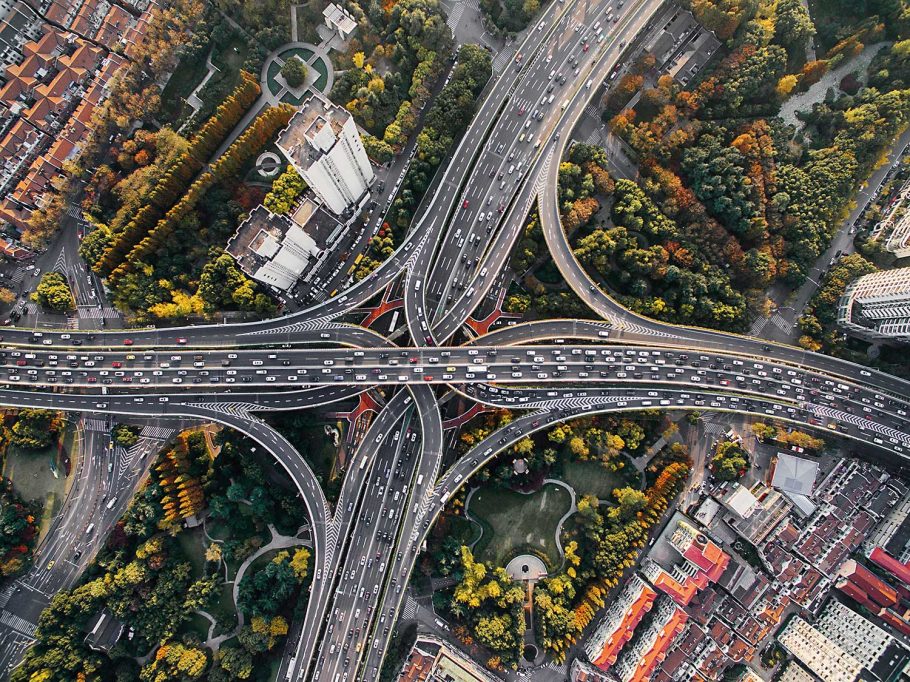
Humans are acting as a major geological agent on a planetary scale and our activities have already altered the course of many key Earth processes. These disturbances include increments in atmospheric levels of greenhouse gases, as well as variations in stable carbon isotope ratios as a consequence of massive fossil fuel use./ Photo: Denys Nevozhai / Unsplash
Also in 2019, the Intergovernmental Panel on Climate Change published two special scientific reports on the land and the ocean and cryosphere that expressed great concern about the observed and projected alterations to our planet as a result of climate change. They also provided an increasingly solid scientific basis for implementing measures to meet the targets set out in the various international agreements (IPCC, 2019a, 2019b). Nonetheless, due to insufficient or unfulfilled governmental commitments, greenhouse gas emissions continue to rise despite warnings from the scientific community.
«Atmospheric CO2 may have already pushed the Earth system sufficiently to postpone the next glacial onset for at least another 100,000 years»
Although the changes associated with the Anthropocene have so far been geologically brief, their consequences have caused a very clear global shift to a new climate trajectory, with effects that will persist for centuries, millennia, and even millions of years (and which are likely to intensify in the short to medium term). Some of these changes are already irreversible, even if humanity were to disappear tomorrow. This is the case with the effects on the atmosphere and oceans caused by the massive release of greenhouse gases (Steffen et al., 2016). Variations in atmospheric levels of CO2, CH4, and N2O, as well as changes in stable carbon isotope ratios, already exceed the natural variability of both the Holocene Epoch and the Quaternary Period (Waters et al., 2016), and are outside their natural trajectory of past millennia (Figure 1). We are therefore in a distinctly different climate system, where the main drivers of climate change are no longer Milankovitch’s orbital cycles, but rather, massive and rapid anthropogenic greenhouse gas emissions. Indeed, recent climate models suggest that atmospheric CO2 resulting from burning fossil fuels may have already pushed the Earth system sufficiently to postpone the next glacial onset for at least another 100,000 years (Ganopolski et al., 2016).
With the amount of CO2 currently in the atmosphere, the planet will continue to warm, and this will lead to a long-term sea level rise, even if greenhouse gas emissions were to cease immediately. Past sea level elevations took much longer to reach equilibrium than the increase in atmospheric temperature did. For example, solar warming due to orbital cycles ended 11,700 years ago (at the beginning of the Holocene), but the sea level continued to rise by an additional 45 metres over 5,000 years, all as ice sheets continued to melt (Summerhayes & Cearreta, 2019).
«Some alterations associated with the Anthropocene are already irreversible, even if humanity were to disappear tomorrow»
The latest IPCC (2019b) projections predict an average sea level rise of 28–57 cm by the end of the 21st century under a scenario that assumes a drastic reduction in greenhouse gas emissions, and 55–140 cm if greenhouse gas emissions continue to increase. Other recent estimates suggest that the average global sea level rise could even exceed 150–200 cm by 2100 (Summerhayes & Cearreta, 2019). This difference in projections reflects uncertainties regarding the future behaviour of the Antarctic and Greenland ice sheets (Church et al., 2013). If emissions are not reduced, Antarctica has the potential to contribute more than 1 metre of sea-level rise by 2100 and more than 15 metres by 2500, while Greenland will make its own additional contribution (Summerhayes & Cearreta, 2019).
Considerable effort will need to be devoted to coastal areas to avoid serious impacts on the 600 million people living in the world’s seaside megacities, all located barely 10 metres above sea level (Summerhayes & Cearreta, 2019). If we want to stabilise the climate at an acceptable temperature and sea level, and thus avoid uncontrolled ocean acidification and all its negative effects on marine life, we need to reduce carbon emissions. Geological history teaches us that our best choice is to stabilise the climate at 1.5–2 °C above 1900 values, preferably with a sea level rise of less than 1 metre.
Referencees
Church, J. A., Clark, P. U., Cazenave, A., Gregory, J. M., Jevrejeva, S., Levermann, A., Merrifield, M. A., Milne, G. A., Nerem, G. A., Nerem, R. S., Nunn, P. D., Payne, A. J., Pfeffer, W. T., Stammer, D., & Unnikrishnan, A. S. (2013). Sea level change. En T. F. Stocker, D. Qin, G.-K. Plattner, M. Tignor, S. K. Allen, J. Boschung, A. Nauels, Y. Xia, V. Bex, & P. M. Midgley (Eds.), Climate change 2013: The physical science basis. Contribution of Working Group I to the Fifth assessment report of the Intergovernmental Panel on Climate Change (p. 1137–1216). Cambridge University Press. https://doi.org/10.1017/CBO9781107415324.026
Crutzen, P. J., & Stoermer, E. F. (2000). The “Anthropocene”. Global Change International Geosphere–Biosphere Programme Newsletter, 41, 17–18.
Ganopolski, A., Winkelmann, R., & Schellnhuber, H. J. (2016). Critical insolation-CO2 relation for diagnosing past and future glacial inception. Nature, 529(7585), 200–203. https://doi.org/10.1038/nature16494
IPCC. (2019a). Climate change and land: An IPCC special report on climate change, desertification, land degradation, sustainable land management, food security, and greenhouse gas fluxes in terrestrial ecosystems. In P. R. Shukla, J. Skea, E. Calvo Buendia, V. Masson-Delmotte, H.-O. Pörtner, D. C. Roberts, P. Zhai, R. Slade, S. Connors, R. van Diemen, M. Ferrat, E. Haughey, S. Luz, S. Neogi, M. Pathak, J. Petzold, J. Portugal Pereira, P. Vyas, E. Huntley, ... J. Malley (Eds.). En prensa.
IPCC. (2019b). IPCC special report on the ocean and cryosphere in a changing climate. . H.-O. Pörtner, D. C. Roberts, V. Masson-Delmotte, P. Zhai, M. Tignor, E. Poloczanska, K. Mintenbeck, A. Alegría, M. Nicolai, A. Okem, J. Petzold, B. Rama, N. M. Weyer (Eds.). En prensa.
Koppers, A. A. P., & Coggon, R. (2020). Exploring earth by scientific ocean drilling: 2050 Science Framework. UC San Diego Library Digital Collections. https://doi.org/10.6075/J0W66J9H
Steffen, W., Broadgate, W., Deutsch, L., Gaffney, O., & Ludwig, C. (2015). The trajectory of the Anthropocene: The Great Acceleration. The Anthropocene Review, 2(1), 81–98. https://doi.org/10.1177/2053019614564785
Steffen, W., Leinfelder, R., Zalasiewicz, J., Waters, C. N., Williams, M., Summerhayes, C., Barnosky, A. D., Cearreta, A., Crutzen, P., Edgeworth, M., Ellis, E. C., Fairchild, I. J., Galuszka, A., Grinevald, J., Haywood, A., Ivar do Sul, J., Jeandel, C., McNeill, J. R., Odada, E., … Schellnhuber, H. J. (2016). Stratigraphic and Earth System approaches to defining the Anthropocene. Earth’s Future, 4(8), 324–345. https://doi.org/10.1002/2016EF000379
Summerhayes, C., & Cearreta, A. (2019). Climate change and the Anthropocene. En J. Zalasiewicz, C. N. Waters, M. Williams, & C. P. Summerhayes (Eds.), The Anthropocene as a geological time unit. A guide to the scientific evidence and current debate (p. 200–241). Cambridge University Press. https://doi.org/10.1017/9781108621359.006
Summerhayes, C. P., & Zalasiewicz, J. (2018). Global warming and the Anthropocene. Geology Today, 34(5), 194–200. https://doi.org/10.1111/gto.12247
Syvitski, J., Waters, C., Day, J., Milliman, J. D., Summerhayes, C., Steffen, W., Zalasiewicz, J., Cearreta, A., Galuszka, A., Hajdas, I., Head, M. J., Leinfelder, R., McNeill, J. R., Poirier, C., Rose, N. L., Shotyk, W., Wagreich, M., & Williams, M. (2020). Extraordinary human energy consumption and resultant geological impacts beginning around 1950 CE initiated the proposed Anthropocene Epoch. Communications Earth & Environment, 1, 32. https://doi.org/10.1038/s43247-020-00029-y
UNEP. (2019). Emissions gap report 2019. United Nations.
Walker, M., Head, M. J., Berkelhammer, M., Björck, S., Cheng, H., Cwynar, L., Fisher, D., Gkinis, V., Long, A., Lowe, J., Newnham, R., Rasmussen, S. O., & Weiss, H. (2018). Formal ratification of the subdivision of the Holocene Series/Epoch (Quaternary System/Period): Two new Global Boundary Stratotype Sections and Points (GSSPs) and three new stages/subseries. Episodes, 41(4), 213–223. https://doi.org/10.18814/epiiugs/2018/018016
Waters, C. N., Zalasiewicz, J., Summerhayes, C., Barnosky, A. D., Poirier, C., Gałuszka, A., Cearreta, A., Edgeworth, M., Ellis, E. C., Ellis, M., Jeandel, C., Leinfelder, R., McNeill, J. R., Richter D. de B., Steffen, W., Syvitski, J., Vidas, D., Wagreich, M., Williams, M., … Wolfe, A. P. (2016). The Anthropocene is functionally and stratigraphically distinct from the Holocene. Science, 351(6269), aad2622. https://doi.org/10.1126/science.aad2622
Zalasiewicz, J., Williams, M., Waters, C., Barnosky, T., Palmesino, J., Rönnskog, A.-S., Edgeworth, E., Neal, C., Cearreta, A., Ellis, E. C., Grinevald, J., Haff, P., Ivar do Sul, Jeandel, C., Leinfelder, R., J. A., McNeill, J. R., Odada, E., Oreskes, N., Price, S. J., … Wolfe, A. P. (2017). Scale and diversity of the physical technosphere: A geological perspective. The Anthropocene Review, 4, 9–22. https://doi.org/10.1177/2053019616677743


